A visit to local palm oil production plant
A few days ago, I took a trip down to a rural area in the Southwestern part of Nigeria - The Yorubas. Specifically, I went for a visit to the palm-oil producing plant in the area. Perhaps not a plant per se, but an equivalence of it because the processing is about 95% manual and 5% machine-based. I frequently visited the place while growing up as a kid, especially as our family's cocoa farm is also within the same area.
Palm oil represents one of the most important food additives in Nigeria generally, irrespective of the tribe. The Yorubas are especially known for loving excess palm oil in their foods, although I am a true-bred Yoruba and I do not like excess oil in my foods. It is an edible vegetable oil derived primarily from the fruits of the palm tree - Elais guineenses - the mesocarp to be precise. It is high in fatty acid contents with the major one being the 16-carbon palmitic acid. The unbleached oil is also rich in carotene.
The richness in saturated fat means that palm oil consumption helps to increase low-density lipoproteins in the blood, thereby reducing the risks of cardiovascular diseases. According to the health benefits times:
One cup of Palm oil serves 1909 calories and 216 g of total lipid fat. It also offers 0.02 mg of iron, 0.6 mg of choline, 34.43 mg of Vitamin E, 17.3 µg of Vitamin K, 106.488 g of total saturated fat, 0.216 g of lauric acid, 2.16 g of myristic acid, 93.96 g of palmitic acid, 9.288 g of stearic acid, 79.92 g of total monounsaturated fats, 0.648 g of palmitoleic acid, 79.056 g of oleic acid, 0.216 g of gadoleic acid, 20.088 g of total polyunsaturated fats, 19.656 g of linoleic acid and 0.432 g of Linolenic acid.
Apart from human consumption, palm oil is also used industrially in the production of soaps, cosmetics, and biofuels.
The local production plant
The local production plant covers a fairly large area of land divided into several units, including the unit where harvested oil palm fruits are kept prior to processing, cooking unit, and oil extraction unit. Palm oil local production plants are usually located close to access to water because of the importance that water plays in the processing.
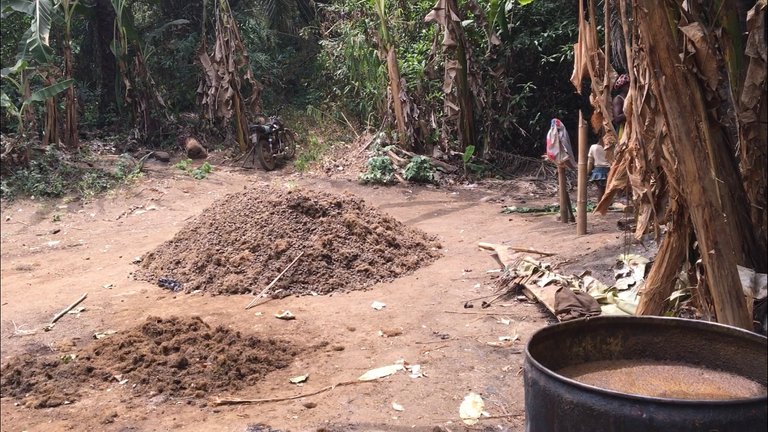
Harvested fruits from the farm are usually kept piled together depending on their maturity levels before harvesting. Those that are already ripe before harvesting need to be processed into palm oil almost immediately while those that are just about to ripe can still be kept for a few days. The latter are the ones usually kept piled together and covered with palm fronds in a unit designed for such.
The cooking area is usually for cooking as the name implies. Ripe fruits that have been removed from their bunches are collected in metal drums and cooked for a period of time. Extracted oil, after collection, is also heated in this unit.
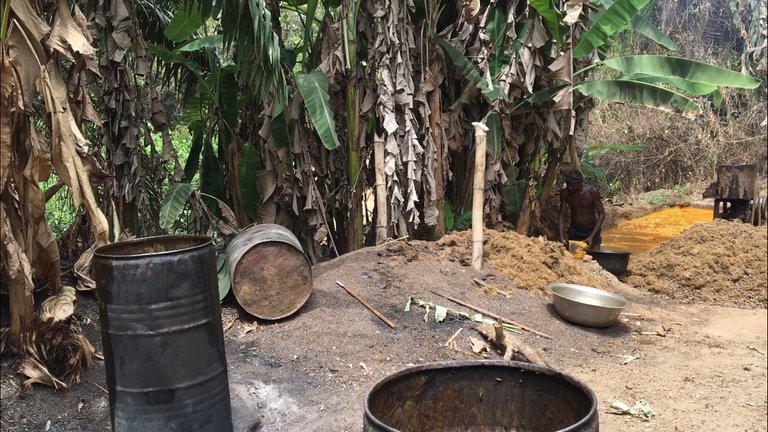
The oil extraction unit is, perhaps, the most important unit in the production plant. The place where the extraction is carried is usually a rectangular hole dug into the ground and lined with woods. It is usually located very close to water. Cooked fruit is poured into it and mashed, usually with legs, after it has cooled down to an extent. Mashing is done to remove the fleshy and oil-containing part of the fruit from the stony endocarp. In some cases, the cooked fruit is transferred into a milling machine that helps separate the fleshy parts from the endocarp before the content is poured into the basin. Water is then added and the actual oil extraction commences. The entire process can take a few days.
Below are the images I took from the production plant with their descriptions.
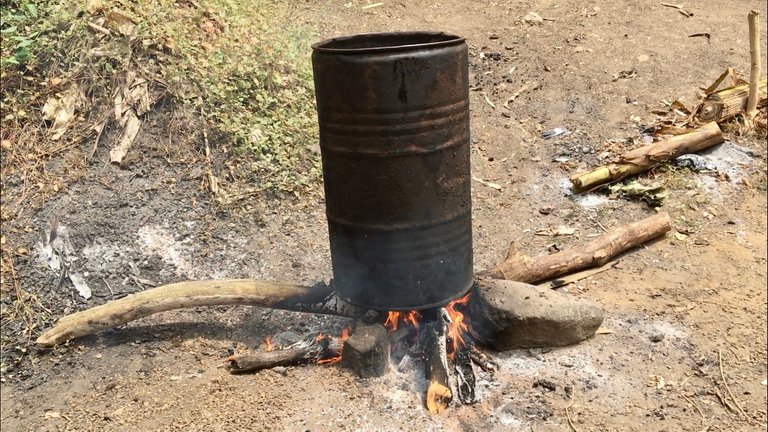
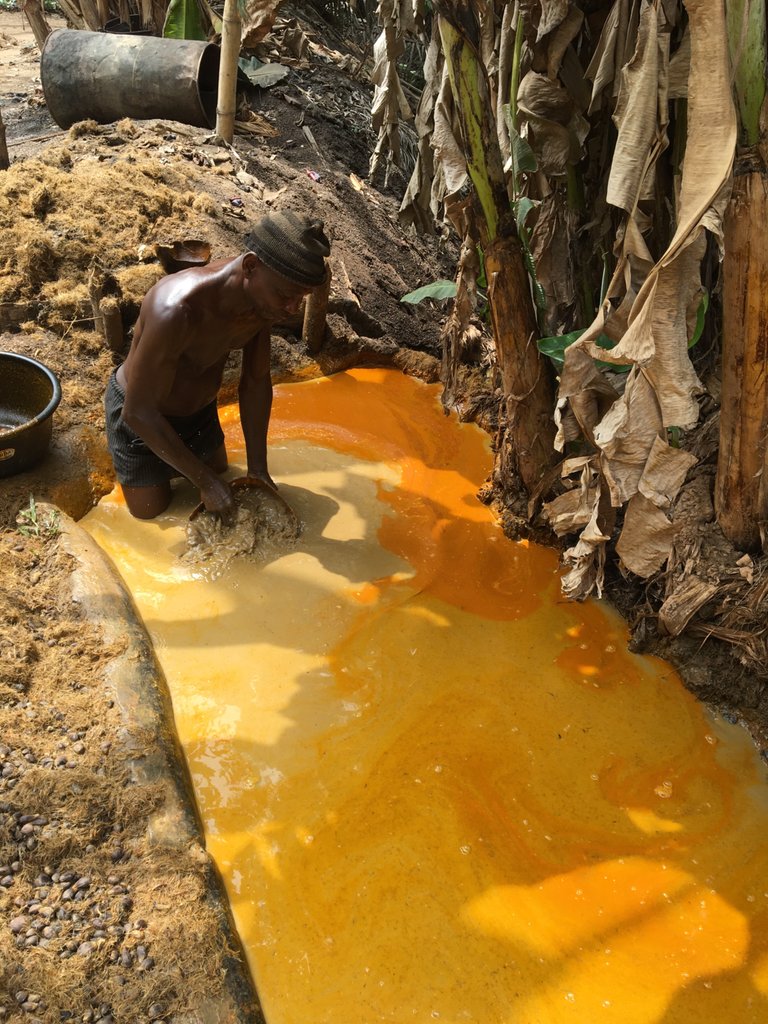

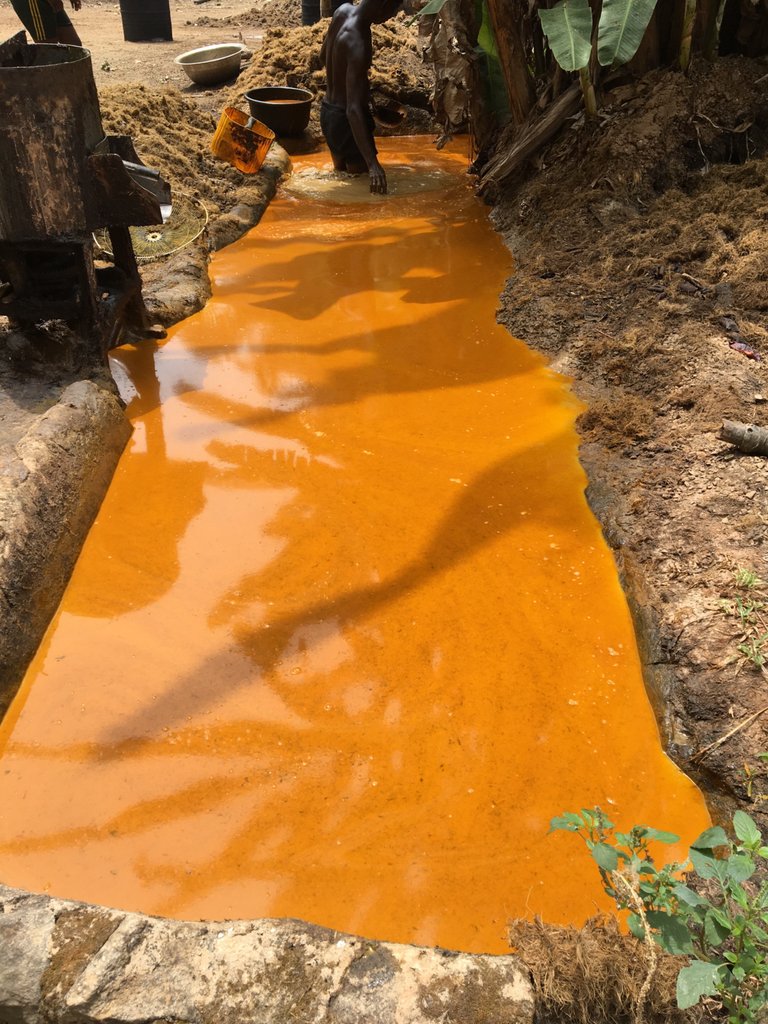
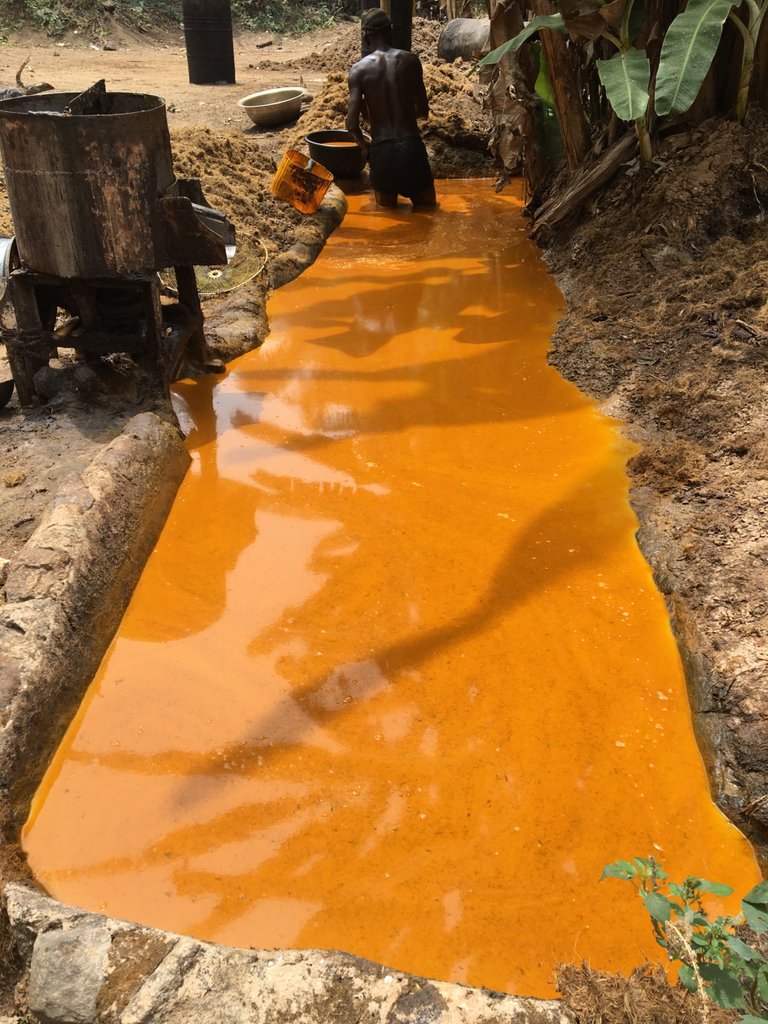
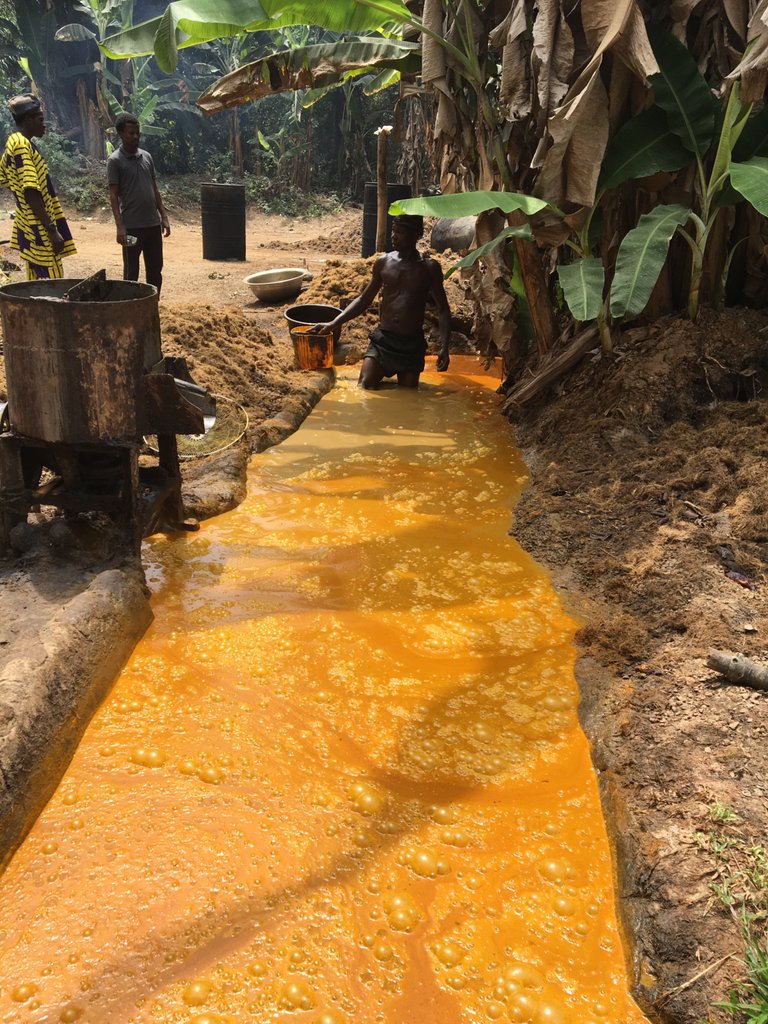
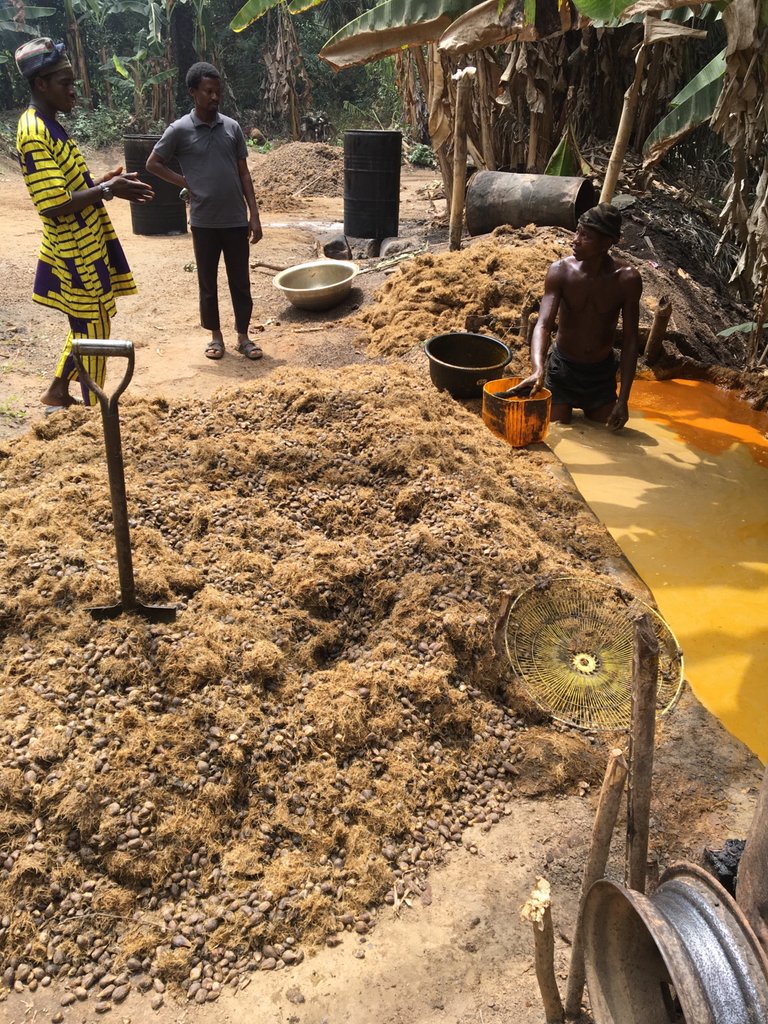
Thank you all for reading.
Thanks for revealing this process to us. I had no idea how it was done. Interesting to see how they do it in your country.
Lately palm oil has become a bit controversial in the west, because it is an additive in many products, and there has been a lot of deforestation for it's production in different countries. Until we can be assured that it's ethically harvested, many don't want to buy products with it in it.
I’m glad to put it out there. Palm oil production is linked with deforestation because forests are cleared to be replaced with oil pal plantation. It should be done in such a way as not to disrupt the natural balance of the ecosystem
https://twitter.com/miss_sarcasms/status/1367221888536236036
Thanks for your contribution to the STEMsocial community. Feel free to join us on discord to get to know the rest of us!
Please consider supporting our funding proposal, approving our witness (@stem.witness) or delegating to the @stemsocial account (for some ROI).
Please consider using the STEMsocial app app and including @stemsocial as a beneficiary to get a stronger support.
The extraction process of this oil is very interesting, I have read some articles that mention that when the process is manual the oil is of better quality and healthier, since there is no use of chemicals in the extraction.
That is an interesting take. If, indeed, some extraction methods require chemicals et al, oil from this primitive process will definitely be healthier and of better quality.
The process is interesting. I thought palm oils are directly extracted from pressing the fruits of a palm trees. So the process is quite long. I had no idea that it is quite tedious to make.
It is a relatively long process. Although this one seems to be a primitive process. I am sure there should be a more technologically advanced way to extract the oil.
This is incredible. I would have never even imagined it was done in this manner. It just always seems like the finished product had to automated. Seeing someone walk around in that basin doing this all by hand is incredible. Every time I read things on STEM I learn something so new I don't think I could possibly have come across it anywhere else. Thank you for the detailed post and pictures!
It is a pleasure for me to share this information with the rest of the world, especially those in advanced countries where this kind of practice might be totally alien. I have also learned a lot by reading and interacting on this blockchain. Thank you for the audience and the generous compliment.
This remind me of my local village at ayegbaju, a small rural settlement in ilesa, a town in osun state.
I first saw the process of Palm oil making in this village in a place they call 'eku' in YouTube, thou I didn't put the head sign. I like your post
Yes, it is called EKU. The refining process would be quite interesting to someone that has not witnessed such before. Thanks for the compliment.
Interesante método para la extracción de aceite
https://twitter.com/miss_sarcasms/status/1569352409113141256
The rewards earned on this comment will go directly to the people( @hadji ) sharing the post on Twitter as long as they are registered with @poshtoken. Sign up at https://hiveposh.com.